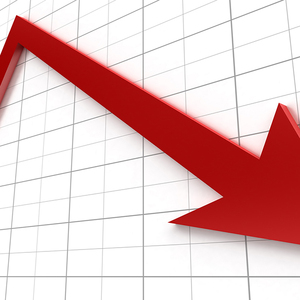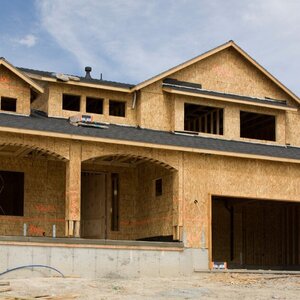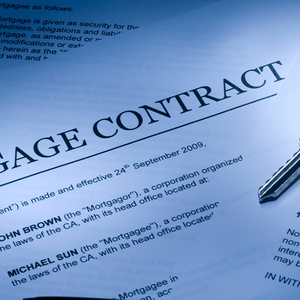The WPJ
THE WORLD PROPERTY JOURNALReal Estate Facts Not Fiction
Residential Real Estate News

$1 Trillion of U.S. Homeowner Equity Recaptured in Q2
Residential News » North America Residential News Edition | By Michael Gerrity | September 26, 2014 8:30 AM ET
According to CoreLogic this week, nearly 950,000 U.S. homes returned to positive equity in the second quarter of 2014, bringing the total number of mortgaged residential properties with equity in the U.S. to more than 44 million.
Nationwide, borrower equity increased year over year by approximately $1 trillion in Q2 2014. The CoreLogic analysis indicates that approximately 5.3 million homes, or 10.7 percent of all residential properties with a mortgage, were still in negative equity as of Q2 2014 compared to 6.3 million homes, or 12.7 percent, for Q1 2014. This compares to a negative equity share of 14.9 percent, or 7.2 million homes, in Q2 2013, representing a year-over-year decrease in the number of homes underwater by almost 2 million (1,962,435), or 4.2 percent.
Negative equity, often referred to as "underwater" or "upside down," means that borrowers owe more on their mortgages than their homes are worth. Negative equity can occur because of a decline in value, an increase in mortgage debt or a combination of both.
For the homes in negative equity status, the national aggregate value of negative equity was $345.1 billion at the end of Q2 2014, down $38.1 billion from approximately $383.2 billion in the first quarter 2014. On a year-over-year basis, the value of negative equity declined from $432.9 billion in Q2 2013, representing a decrease of 20.3 percent in 12 months.
Of the 44 million residential properties with positive equity, approximately 9 million, or 19 percent, have less than 20-percent equity (referred to as "under-equitied") and 1.3 million of those have less than 5 percent (referred to as near-negative equity). Borrowers who are "under-equitied" may have a more difficult time refinancing their existing homes or obtaining new financing to sell and buy another home due to underwriting constraints. Borrowers with near-negative equity are considered at risk of moving into negative equity if home prices fall. In contrast, if home prices rose by as little as 5 percent, an additional 1 million homeowners now in negative equity would regain equity.
"The increase in borrower equity of $1 trillion from a year earlier is evidence that things are moving solidly in the right direction," said Sam Khater, deputy chief economist for CoreLogic. "Borrower equity is important because home equity constitutes borrowers' largest investment segment and, as a result, is driving forward the rise in wealth for the typical homeowner."
"Many homeowners across the country are seeing the equity value in their homes grow, which lifts the economy as a whole," said Anand Nallathambi, president and CEO of CoreLogic. "With more and more borrowers regaining equity, we expect homeownership to become an increasingly attractive option for many who have remained on the sidelines in the aftermath of the great recession. This should provide more opportunities for people to sell their homes, purchase a different home or refinance an existing mortgage."
CoreLogic Q2, 2014 Highlights:
- Nevada had the highest percentage of mortgaged properties in negative equity at 26.3 percent, followed by Florida (24.3 percent), Arizona (19.0 percent), Illinois (15.4 percent) and Rhode Island (14.8). These top five states combined account for 32.8 percent of negative equity in the United States.
- Texas had the highest percentage of mortgaged residential properties in an equity position at 97.3 percent, followed Alaska (96.5 percent), Montana (96.4 percent), North Dakota (96.0 percent) and Hawaii (96.0 percent).
- Of the 25 largest Core Based Statistical Areas (CBSAs) based on population, Tampa-St. Petersburg-Clearwater, Fla., had the highest percentage of mortgaged properties in negative equity at 26.2 percent, followed by followed by Phoenix-Mesa-Scottsdale, Ariz. (19.5 percent), Chicago-Naperville-Arlington Heights, Ill. (17.9 percent), Riverside-San Bernardino-Ontario, Calif. (15.4 percent) and Atlanta-Sandy Springs-Roswell, Ga. (15.3 percent).
- Of the largest 25 CBSAs based on population, Houston-The Woodlands-Sugar Land, Texas had the highest percentage of mortgaged properties in an equity position at 97.5 percent; followed by Dallas-Plano-Irving, Texas (97.0 percent); Anaheim-Santa Ana-Irvine, Calif. (96.4 percent); Portland-Vancouver-Hillsboro, Ore. (96.1 percent) and Seattle-Bellevue-Everett, Wash. (95.4 percent).
- Of the total $345 billion in negative equity, first liens without home equity loans accounted for $180 billion aggregate negative equity, while first liens with home equity loans accounted for $165 billion.
- Approximately 3.2 million underwater borrowers hold first liens without home equity loans. The average mortgage balance for this group of borrowers is $227,000. The average underwater amount is $57,000.
- Approximately 2.1 million underwater borrowers hold both first and second liens. The average mortgage balance for this group of borrowers is $297,000.The average underwater amount is $77,000.
- The bulk of home equity for mortgaged properties is concentrated at the high end of the housing market. For example, 94 percent of homes valued at greater than $200,000 have equity compared with 84 percent of homes valued at less than $200,000.
*Q1 2014 data was revised. Revisions with public records data are standard, and to ensure accuracy, CoreLogic incorporates the newly released public data to provide updated results.
Sign Up Free | The WPJ Weekly Newsletter
Relevant real estate news.
Actionable market intelligence.
Right to your inbox every week.
Real Estate Listings Showcase
Related News Stories
Residential Real Estate Headlines
- Orlando's Housing Market Continues to Slow Down This Fall
- U.S. Mortgage Originations Predicted to Hit $1.95 Trillion in 2024
- Construction Input Costs in America Uptick in September
- Global Home Price Growth Further Slows in Mid-2023
- Home Values in U.S. Begin to Slip Late Summer
- Foreclosure Filings in U.S. Spike 34 Percent Annually in Q3
- U.S. Mortgage Credit Availability Upticks in September
- Retail Market is a Bright Spot for Manhattan Real Estate
- Residential Rents in U.S. Dip in September Amid Growing Apartment Supply
- U.S. Mortgage Rates Continue to Surge in October
- Greater Las Vegas Home Sales Down 10 Percent Annually in September
- Most U.S. Homebuyers Say Buying a Home is More Stressful Than Dating in 2023
- Mortgage Applications Dive 6 Percent Last Week in America
- Despite Peak Interest Rates, Global Housing Markets Improved in Q2
- U.S. Architecture Billings Index Reports Softening Business Conditions in August
- U.S. Home Price Growth Pace Upticks Again in August
- 10,000 Residential Properties Have Negative Equity in Hong Kong
- U.S. Pending Home Sales Dropped 7.1 Percent in August
- U.S. Mortgage Rates Reach Highest Level in 23 Years
- American Bankers See Weakening Credit Conditions Through End of 2024
- Palm Beach Area Residential Sales Uptick in August
- Driven by High Mortgage Rates, Pending Home Sales Drop 13% Annually in September
- Miami Area Residential Sales Slip 13 Percent Annually in August
- U.S. Home Sales Dip 15 Percent Annually in August
- Home Flipping Transactions Down in 2023, Profits Up
- U.S. Listings Inventory Rises 4 Percent in August
- The Fed Leaves Rates Alone for Now in September
- Mortgage Applications Uptick in U.S. Amid High Rates
- Single Family Rent Growth in U.S. Drops to 3-Year Low in July
- Greater Orlando Area Home Sales Down 16 Percent Annually in August
- Home Purchase Cancellations Accelerating in the U.S.
- U.S. Construction Input Costs Uptick in August
- U.S. Mortgage Credit Availability Upticks in August
- Monthly Property Foreclosure Activity Upticks in U.S.
- Greater Palm Beach Area Residential Sales Dip 5 Percent Annually in Mid-2023
- NAR Predicts Several U.S. Housing Market Outcomes
- Demand for U.S. Housing is Dropping as Prices Rise
- U.S. Homeowner Equity Decrease by $287 Billion Over the Last 12 Months
- 1 in 5 Millennials Think They'll Never Own a Home in America
- 1 in 8 San Francisco Home Sellers Is Losing Money at Closing in 2023
Reader Poll
Marketplace Links
This website uses cookies to improve user experience. By using our website you consent in accordance with our Cookie Policy. Read More





